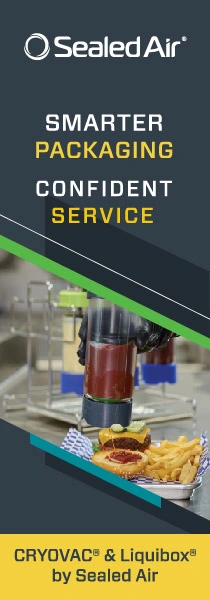Canny brand differentiation from Rexam
Through working in close partnership with its customers, Rexam is helping build bigger, better brands through packaging that is tactile, colourful and uniquely eye-catching. "The first thing a consumer sees when buying a product is the packaging," explains Andrew Copson, Senior Vice President Sales & Marketing for Rexam Beverage Can Europe & Asia.
Through working in close partnership with its customers, Rexam is helping build bigger, better brands through packaging that is tactile, colourful and uniquely eye-catching. "The first thing a consumer sees when buying a product is the packaging," explains Andrew Copson, Senior Vice President Sales & Marketing for Rexam Beverage Can Europe & Asia. "Customers are looking for that unique way to differentiate their brands and recent can enhancements can help them to do just that." Rexam has pioneered work on a wide range of finishes and printing techniques that have been particularly effective at positioning brands at the premium end of the market. These include thermo-chromic inks that change colour in response to temperature, fluorescent inks that glow under UV light and tactile inks that give cans texture and 'touchability'. In September this year, Turkish drinks company Efes, used tactile cans to launch Turkey's first ever malt based fruit drink - Ritmix. The cans have a modern look and use stylish colours to appeal to young image conscious consumers. The tactile finish provides an additional dimension as it gives the cans an almost 'fruity' feel. A similar tactile finish is also being used by drinks company AR Ciclon inc, for its Ciclon energy drink brand in Puerto Rico. Another effective differentiation technique, first developed by Rexam, is embossing, which provides a combination of visual and tactile effects by creating structure to specific areas of the can. "Many of our customers recognise that for them, packaging is the brand at the point of use and through the supply chain, from the initial encounter with above-the-line communication to the moment of purchase and beyond," explains Copson. Carlsberg very successfully used embossing to create shelf appeal and add an extra dimension to the consumer's perceptions of the premium Carlsberg brand during their sponsorship of the European Championship earlier this year. Per Holmen, Brands Identity Manager at Carlsberg is keen to provide customers with this multi-sensory experience. He explains: "The consumer experience starts from the moment they see the Carlsberg logo and recognise the brand, and continues right through to the moment they feel the packaging in their hands and ultimately taste and enjoy the drink." With its huge consumer appeal and many decorative options, the can is increasingly being used to reflect brand values of an ever-expanding portfolio of products, traditionally packaged in either glass or plastic. "Several brands have experimented with plastics in recent years, but it's no surprise that marketers are now shifting back to the can for added differentiation, " explains Copson. "The shift is helped by the wide variety of can sizes now available to customers, which means we effectively have a can suitable for any drink out there. It also means brand owners can use different can sizes to appeal to different target audiences. For example, research has shown that women tend to prefer smaller pack sizes than men. As a result of this, a number of major brand owners are looking at expanding their flagship brands into smaller cans such as the 250ml slim can." Rexam's range now encompasses 13 different can sizes from the 150ml slim can to the supersized 568ml can and it has the most extensive selection in the European market place. The fastest growing can size last year was the 250ml slim can. Although initially targeted by energy drinks brands, it is now also increasingly being used in other segments, for example, dairy products and the Ready-to-Drink (RTD) segment. Earlier this year, Danish Hela Wine and Spirits APS launched Cuba Cabana, an RTD mix of chocolate milk and caramel vodka in the 250ml slim can, which they felt offered a modern convenient package that stood out from packaging traditionally used by other Scandinavian RTD brands. In Italy, Lockwoods Italia have also recently used the slim can for both their Pina Colada and coffee flavoured RTDs. The use of cans for packaging milk based products such as Cuba Cabana is relatively recent as previously the decorative inks and varnishes used on aluminium cans were unable to withstand the high temperatures applied during the sterilisation process. After close work with suppliers, Rexam can now offer special inks and varnishes that allow the beverage can to withstand temperatures of up to 122 °. Now that the mould has been broken, the canning of sterilised products is a trend set to continue and will provide further branding and marketing opportunities to a new set of players in the drinks industry. Although traditionally associated with beverage packaging, perhaps the most exciting recent development for the two-piece can however, has been its diversification into the snacks arena. In Germany, leading snacks producer Lorenz Bahlsen has introduced the can as a new package for its popular salted peanuts range whilst Swedish Brewer Spendrups has been offering a can of peanuts with every six-pack of its top selling beer Norrlands Guld. Both use 33cl cans with full opening ends. "An increasing number of brand owners who haven't traditionally employed metal packaging are now including cans as a critical component for both their standard ranges and their niche products," concludes Copson. "For our customers, cans not only provide the most cost-effective and efficient package to fill, store and transport, but perhaps more importantly, they provide an amazing opportunity for brand building and differentiation - a benefit that cannot be ignored in today's competitive market place.











